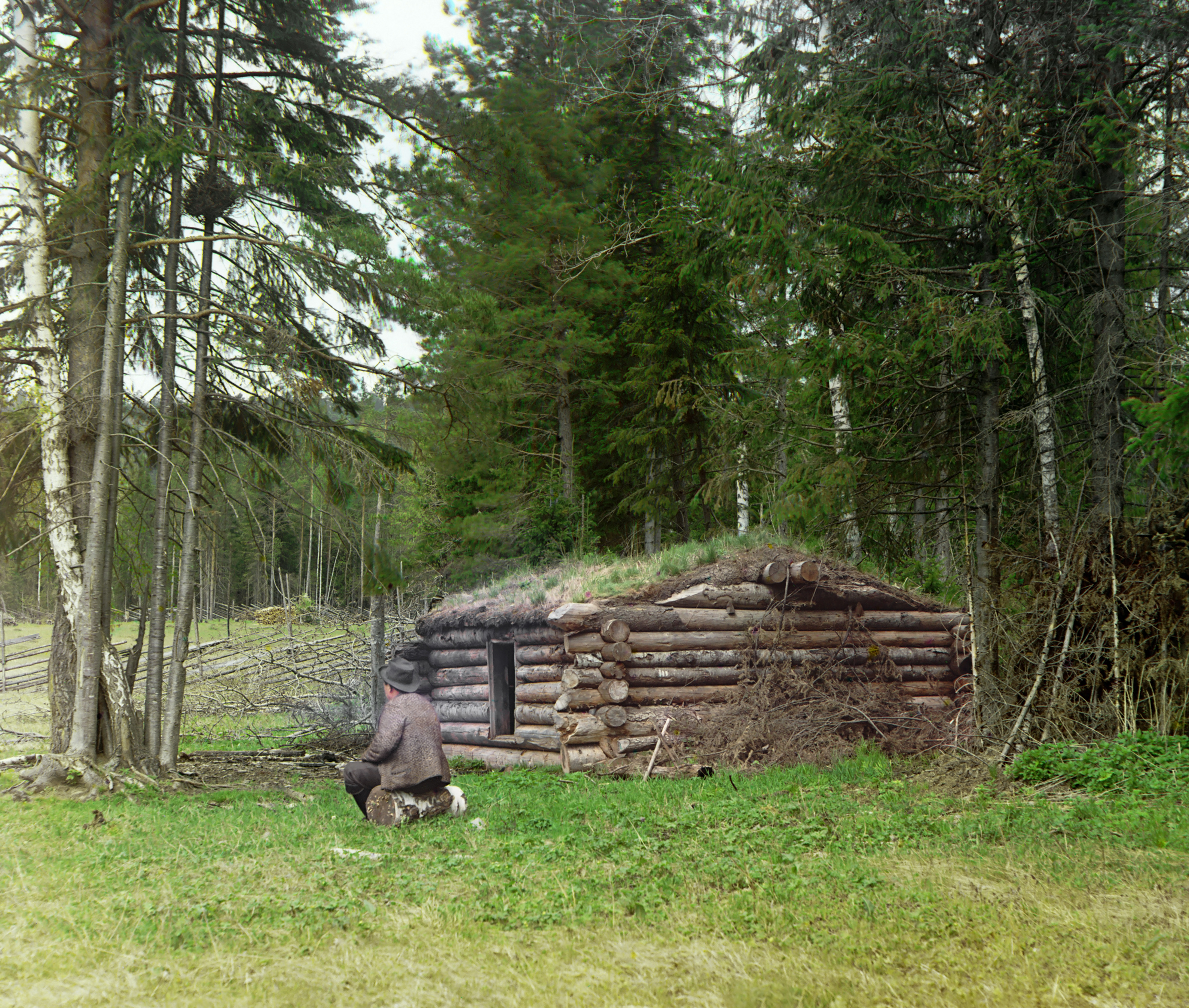|
Carbolineum
Carbolineum is an oily, water-insoluble, flammable, dark brown mixture from coal tar components, smelling of tar. It contains among other things anthracene and phenol. Because of its rot-resisting and disinfecting effect, Carbolineum was used over many years for the preservation of wooden structures such as railroad ties, telephone poles, cabins, ''etc''. More recently, its use has been limited and/or forbidden by the introduction of stricter environmental regulations. See also * Creosote Creosote is a category of carbonaceous chemicals formed by the distillation of various tars and pyrolysis of plant-derived material, such as wood, or fossil fuel. They are typically used as preservatives or antiseptics. Some creosote types w ... References {{Reflist Coal ... [...More Info...] [...Related Items...] OR: [Wikipedia] [Google] [Baidu] [Amazon] |
Coal Tar
Coal tar is a thick dark liquid which is a by-product of the production of coke and coal gas from coal. It is a type of creosote. It has both medical and industrial uses. Medicinally it is a topical medication applied to skin to treat psoriasis and seborrheic dermatitis ( dandruff). It may be used in combination with ultraviolet light therapy. Industrially it is a railroad tie preservative and used in the surfacing of roads. Coal tar was listed as a known human carcinogen in the first Report on Carcinogens from the U.S. Federal Government, issued in 1980. Coal tar was discovered circa 1665 and used for medical purposes as early as the 1800s. Circa 1850, the discovery that it could be used as the main raw material for the synthesis of dyes engendered an entire industry. It is on the World Health Organization's List of Essential Medicines. Coal tar is available as a generic medication and over the counter. Side effects include skin irritation, sun sensitivity, aller ... [...More Info...] [...Related Items...] OR: [Wikipedia] [Google] [Baidu] [Amazon] |
Anthracene
Anthracene is a solid polycyclic aromatic hydrocarbon (PAH) of formula C14H10, consisting of three fused benzene rings. It is a component of coal tar. Anthracene is used in the production of the red dye alizarin and other dyes, as a scintillator to detect high energy particles, as production of pharmaceutical drugs. Anthracene is colorless but exhibits a blue (400–500 nm peak) fluorescence under ultraviolet radiation. History and etymology Crude anthracene (with a melting point of only 180°) was discovered in 1832 by Jean-Baptiste Dumas and Auguste Laurent who crystalized it from a fraction of coal tar later known as "anthracene oil". Since their (inaccurate) measurements showed the proportions of carbon and hydrogen of it to be the same as in naphthalene, Laurent called it ''paranaphtaline'' in his 1835 publication of the discovery, which is translated to English as paranaphthalene. Two years later, however, he decided to rename the compound to its modern name d ... [...More Info...] [...Related Items...] OR: [Wikipedia] [Google] [Baidu] [Amazon] |
Phenol
Phenol (also known as carbolic acid, phenolic acid, or benzenol) is an aromatic organic compound with the molecular formula . It is a white crystalline solid that is volatile and can catch fire. The molecule consists of a phenyl group () bonded to a hydroxy group (). Mildly acidic, it requires careful handling because it can cause chemical burns. It is acutely toxic and is considered a health hazard. Phenol was first extracted from coal tar, but today is produced on a large scale (about 7 million tonnes a year) from petroleum-derived feedstocks. It is an important industrial commodity as a precursor to many materials and useful compounds, and is a liquid when manufactured. It is primarily used to synthesize plastics and related materials. Phenol and its chemical derivatives are essential for production of polycarbonates, epoxies, explosives such as picric acid, Bakelite, nylon, detergents, herbicides such as phenoxy herbicides, and numerous pharmaceuti ... [...More Info...] [...Related Items...] OR: [Wikipedia] [Google] [Baidu] [Amazon] |
Railroad Ties
A railroad tie, crosstie (American English), railway tie (Canadian English) or railway sleeper (Australian and British English) is a rectangular support for the rails in railroad tracks. Generally laid perpendicular to the rails, ties transfer loads to the track ballast and subgrade, hold the rails upright and keep them spaced to the correct gauge. Railroad ties are traditionally made of wood, but prestressed concrete is now also widely used, especially in Europe and Asia. Steel ties are common on secondary lines in the UK; plastic composite ties are also employed, although far less than wood or concrete. As of January 2008, the approximate market share in North America for traditional and wood ties was 91.5%, the remainder being concrete, steel, azobé (red ironwood) and plastic composite. Tie spacing may depend on the type of tie, traffic loads and other requirements, for example on North American mainline railroads to on London, Midland and Scottish Railway jointed tr ... [...More Info...] [...Related Items...] OR: [Wikipedia] [Google] [Baidu] [Amazon] |
Telephone Poles
''Telephone Poles'' is the second book of poetry written by American writer John Updike. Publication The collection was published by Alfred A. Knopf, Knopf in 1963. Reception In ''The New York Times'', critic X.J. Kennedy wrote, "Of younger writers in America today, surely John Updike is our leading pyrotechnist. Few can make words so obligingly sizzle and flash, so clearly light up the landscape of suburbia. While dazzling his readers in the last five years with five novels and books of stories, Updike simultaneously has been turning out satiric verse and light poetry galore: 66 pieces in this new collection, most of them first contributed to The New Yorker. He is, it seems, like some designer of Explorer rockets who hasn't enough to do, in his spare time touching off displays of Roman candles...It also shows Updike to be on occasion a poet of rare depth and competence. We ought to have expected this — if not from his earlier book of light verse, ''The Carpentered Hen,'' th ... [...More Info...] [...Related Items...] OR: [Wikipedia] [Google] [Baidu] [Amazon] |
Log Cabin
A log cabin is a small log house, especially a minimally finished or less architecturally sophisticated structure. Log cabins have an ancient history in Europe, and in America are often associated with first-generation home building by settlers. History Europe Construction with logs was described by Roman architect Vitruvius Pollio in his architectural treatise ''De Architectura''. He noted that in Pontus in present-day northeastern Turkey, dwellings were constructed by laying logs horizontally overtop of each other and filling in the gaps with "chips and mud". Log cabin construction has its roots in Scandinavia and Eastern Europe. Although their precise origin is uncertain, the first log structures were probably being built in Northern Europe by the Bronze Age around 3500 BC. C. A. Weslager describes Europeans as having: A medieval log cabin was considered movable property, evidenced by the relocation of Espåby in 1557, where the buildings were disassembled, transpo ... [...More Info...] [...Related Items...] OR: [Wikipedia] [Google] [Baidu] [Amazon] |
Creosote
Creosote is a category of carbonaceous chemicals formed by the distillation of various tars and pyrolysis of plant-derived material, such as wood, or fossil fuel. They are typically used as preservatives or antiseptics. Some creosote types were used historically as a treatment for components of seagoing and outdoor wood structures to prevent rot (e.g., bridgework and railroad ties, see image). Samples may be found commonly inside chimney flues, where the coal or wood burns under variable conditions, producing soot and tarry smoke. Creosotes are the principal chemicals responsible for the stability, scent, and flavor characteristic of smoked meat; the name is derived . The two main kinds recognized in industry are coal-tar creosote and wood-tar creosote. The coal-tar variety, having stronger and more toxic properties, has chiefly been used as a preservative for wood; coal-tar creosote was also formerly used as an escharotic, to burn malignant skin tissue, and in dentistry ... [...More Info...] [...Related Items...] OR: [Wikipedia] [Google] [Baidu] [Amazon] |




